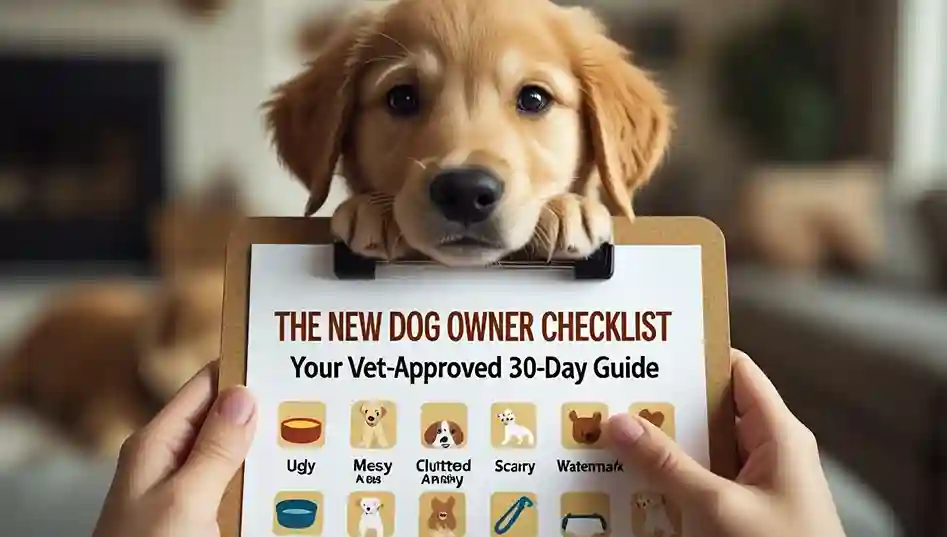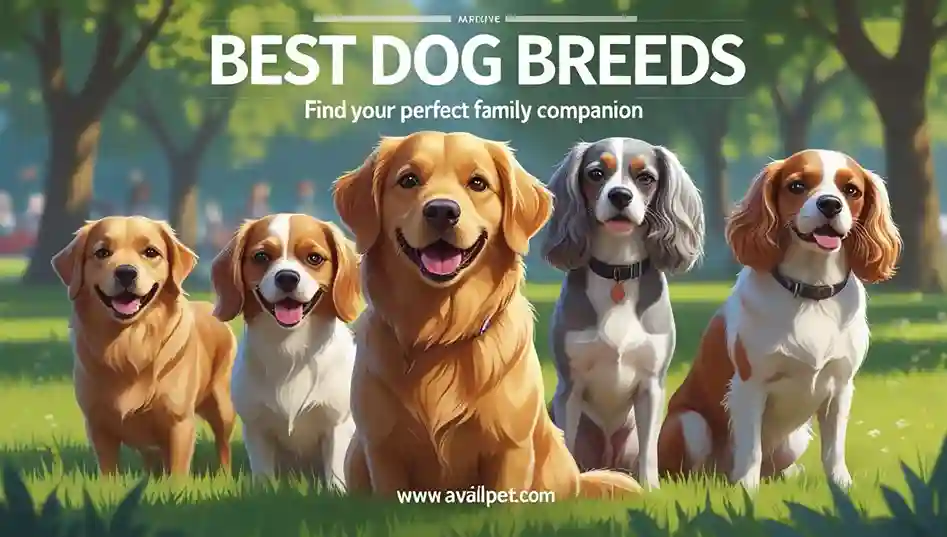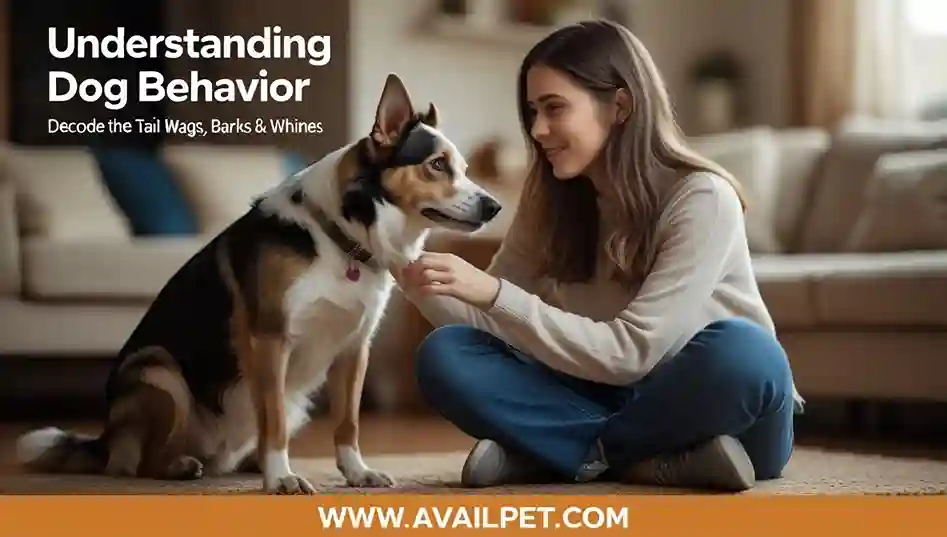That intense, unwavering gaze—you’ve felt it. Your dog is staring at you, but why does my dog stare at me? While it can be a sign of deep affection, this common behavior is a complex part of canine communication with multiple potential meanings. Understanding the motivation behind the stare is a crucial aspect of the communication skills covered in our comprehensive guide to understanding dog behavior.
Is your dog trying to bond, ask for food, express confusion, or could it be a sign of an underlying issue? This vet-reviewed guide decodes the seven most common reasons for this behavior, helping you distinguish a loving gaze from a look of anxiety or a medical red flag.
Learn to interpret this silent language. Let’s uncover what your dog is truly saying when they lock eyes with you.
Key Takeaways: Why Does My Dog Stare at Me?
Before we explore the detailed reasons, here are the essential facts every dog owner should know about canine staring behavior.
- 👁️ Multiple Meanings: Dog staring can signal affection, anticipation, confusion, or even medical issues – context is key.
- 💝 Bonding Behavior: Mutual gazing releases oxytocin (the “love hormone”) in both dogs and humans, strengthening your bond.
- 🗣️ Communication Tool: Staring is often your dog’s way of asking for something or trying to understand what you want.
- 😊 Read the Signals: A soft, relaxed gaze usually means love, while a hard, intense stare may indicate anxiety or other concerns.
- ⚠️ Know When to Act: While usually harmless, sudden changes in staring behavior or intense, compulsive staring warrant attention.
“At a Glance” Comparison Table: Types of Dog Stares
| Stare Type | Typical Meaning | Body Language Cues |
|---|---|---|
| Affectionate Stare | Bonding, love, connection | Soft eyes, relaxed body, possibly wagging tail, “smiling” mouth |
| Anticipatory Stare | Waiting for cues or rewards | Focused, alert posture, may include whining or pacing, ears forward. |
| Confused Stare | Trying to understand you | Head tilting, ears forward, questioning expression, slight head turns. |
| Anxious Stare | Worry or uncertainty | Tense body, pinned ears, possibly panting, whale eye (showing whites of eyes). |
| Resource Guarding Stare | Protective behavior | Stiff posture, fixed gaze, may growl if approached, body blocking. |
The 7 Main Reasons Dogs Stare at Humans
Understanding why your dog is staring helps you respond appropriately to their needs and strengthen your relationship. Here are the primary motivations behind this common behavior.
Affection & Bonding: The Love Gaze
When your dog looks at you with soft, relaxed eyes and a wiggly body, they’re engaging in what researchers call the “love gaze.” This mutual staring releases oxytocin—the same bonding hormone that strengthens mother-infant connections—in both you and your dog. It’s their way of saying “I love you” and strengthening your emotional bond.
Anticipation: Waiting for Cues or Rewards
Dogs are masters of reading patterns. If your dog stares at you while you’re eating, preparing their food, or getting ready for a walk, they’re anticipating something good. This focused, alert stare means they’ve learned certain actions lead to rewards and they’re waiting for their cue or treat.
Communication: Trying to Tell You Something
Your dog may be staring because they need something. Whether it’s a full water bowl, a need to go outside, or a desire to play, dogs often use staring as a way to communicate their needs. They’ve learned that making eye contact is an effective way to get your attention and convey their message.
Confusion: Seeking Clarification
During training or when you give an unfamiliar command, your dog might stare at you with a slightly tilted head. This “confused stare” indicates they’re trying to understand what you want but aren’t quite sure. It’s their way of asking for clarification or more information.
Protection: Guarding Behavior
Some dogs stare as part of protective or resource-guarding behavior. This stare is typically intense and focused, accompanied by a stiff body posture. They might be guarding their food, a favorite toy, or even you. This type of staring requires careful management and professional guidance if it becomes problematic.
Anxiety: Seeking Reassurance
An anxious dog may stare at their owner for comfort and reassurance. This often happens during stressful situations like thunderstorms, fireworks, or visits to the vet. The stare is usually accompanied by other stress signals like panting, pacing, or whining.
Medical Issues: When Staring Signals Pain
In some cases, increased staring or changes in staring behavior can indicate underlying medical problems. Vision issues, neurological conditions, or pain can cause unusual staring patterns. If the staring is new, intense, or accompanied by other behavioral changes, consult your veterinarian.
Reading Canine Staring Behavior
Learning to interpret the nuances of your dog’s stare helps you understand their emotional state and respond appropriately. Here’s how to read different types of stares.
Soft Eyes vs. Hard Stare: Knowing the Difference
A soft gaze involves relaxed eye muscles, slightly squinted eyes, and a generally calm facial expression. This is the “love stare” that strengthens your bond. A hard stare features wide-open, unblinking eyes with tense eye muscles, often accompanied by a rigid body posture. This type of stare can precede reactive behavior and should be taken seriously.
Context Matters: Reading Stares in Different Situations
The same stare can mean different things depending on the situation. A focused stare during mealtime likely means anticipation, while the same stare directed at another dog could signal a challenge. A soft stare during cuddle time indicates affection, but a similar soft stare in a new environment might mean your dog is looking to you for guidance and reassurance.
Accompanying Body Language Cues to Watch For
Always read the stare in context with other body signals:
- Relaxed body + soft eyes = Affection.
- Stiff body + hard stare = Tension or warning.
- Pacing + staring = Anxiety or excitement.
- Head tilt + staring = Curiosity or confusion.
- Lip licking/whale eye + staring = Stress or discomfort.
When Dog Staring Becomes a Concern
While most staring is normal canine behavior, certain patterns warrant closer attention. Here’s how to recognize when staring might indicate an underlying issue.
Signs of Compulsive Staring Behavior
Compulsive staring goes beyond normal communication and may indicate an obsessive disorder. Watch for:
- Duration: Staring that continues for several minutes without breaking.
- Lack of Response: Dog doesn’t respond to their name or distractions.
- Fixed Patterns: Always stares at the same object or in the same way.
- Interruption: Staring interferes with normal activities like eating or sleeping.
- Distress Signs: Shows anxiety when prevented from staring.
Medical Red Flags: From Vision Problems to Neurological Issues
Certain types of staring require veterinary attention:
- Sudden onset of intense staring behavior.
- “Vacant” staring where dog seems unaware of surroundings.
- Staring at walls or empty spaces repeatedly.
- Accompanying symptoms like confusion, circling, or seizures.
- Changes in pupil size or responsiveness to visual cues.
How to Address Problematic Staring
If staring becomes concerning:
- Document the behavior – note frequency, duration, and triggers.
- Schedule a veterinary visit to rule out medical causes.
- Provide mental stimulation through puzzles and training.
- Establish clear routines to reduce anxiety-based staring.
- Consult a certified behaviorist for compulsive behaviors.
What to Do About Your Dog’s Staring: Practical Solutions
Now that you understand the reasons, here are practical ways to respond to different types of staring, strengthening your communication and bond.
Responding to the “Love Gaze”
This is behavior you want to encourage! When your dog gives you soft, affectionate eyes:
- Return the gaze gently and speak in a calm, loving tone.
- Offer gentle petting or a calm cuddle to reinforce the positive bonding moment.
- Avoid loud, excited reactions that might overstimulate them.
Managing “I Want Something” Stares
For stares driven by anticipation, it’s important to not accidentally reward demanding behavior.
- Ask for a behavior first. Before giving them what they want, ask for a “sit” or “down.” Use high-value treats like these training treats to make compliance rewarding.
- Be predictable with routines. An automatic pet feeder can help establish consistent meal times and reduce food-related staring.
- Ignore the stare if it becomes demanding. Wait for them to break focus and then reward that moment of disengagement.
Addressing Anxious or Confused Staring
If your dog is staring out of uncertainty or fear, they need your support.
- Provide reassurance. For a confused stare during training, go back a step and simplify the command.
- Create a safe space. For anxiety, lead them to their crate with a comforting distraction like a Kong stuffed with peanut butter.
- Consider calming aids. For chronic anxiety, a thunder shirt or calming diffuser can help take the edge off.
When to Ignore and When to Redirect
- Ignore compulsive or demand-seeking staring to avoid reinforcing it.
- Redirect by asking for an incompatible behavior. A durable chew toy or interactive puzzle can provide a positive outlet for their focus.
A Veterinarian’s Perspective: Dr. Allona Jackson on Canine Staring
“While most staring is perfectly normal bonding behavior, I always encourage owners to pay attention to the intensity and context. A soft, loving gaze during cuddle time is very different from a fixed, intense stare that continues for minutes without breaking. I’m particularly concerned when staring is accompanied by other behavior changes or seems compulsive.
Many owners don’t realize that sudden changes in staring behavior can indicate underlying health issues. I’ve seen cases where new staring patterns signaled vision problems, neurological conditions, or even pain. If your dog suddenly develops unusual staring habits or seems unable to break focus, it’s worth a veterinary visit to rule out medical causes. Remember that early intervention is key for both behavioral and medical issues.”
— Dr. Allona Jackson, DVM, AvailPet’s Lead Veterinary Consultant
“How We Tested” Methodology
At AvailPet, we believe in providing accurate, evidence-based information about canine communication. Our research into dog staring behavior followed a comprehensive approach to ensure both scientific validity and practical relevance for dog owners.
- Veterinary Behavior Analysis: This guide was developed in consultation with Dr. Allona Jackson, DVM to ensure accurate differentiation between normal staring behaviors and potential signs of stress, anxiety, or medical issues.
- Contextual Observation Study: We documented staring incidents across various scenarios including feeding times, training sessions, play, and relaxation to identify meaningful patterns and triggers.
- Breed-Specific Research: Our team analyzed staring tendencies across different breed groups with varying genetic predispositions and working backgrounds.
- Scientific Literature Review: We incorporated current research on canine-human bonding, oxytocin studies, and canine communication patterns from peer-reviewed journals.
FAQs About Why Does My Dog Stare at Me?
Is it bad to stare back at my dog?
It depends on the type of stare. Returning a soft, loving gaze can strengthen your bond. However, maintaining direct eye contact with an unfamiliar dog or returning a hard, intense stare can be perceived as a challenge or threat. Always match your dog’s energy – soft eyes for soft eyes, and break contact if they seem uncomfortable.
Why does my dog stare at me while I eat?
This is typically anticipatory behavior. Your dog has learned that your eating might lead to scraps or sharing. They’re focused on you and the food, hoping for a reward. To manage this, you can feed them first, ask for a “place” command away from the table, or provide them with their own chew toy during your meals.
Should I be worried if my dog stares at walls?
Yes, this warrants attention. While occasionally following a bug or sound is normal, compulsive wall-staring could indicate medical issues like vision problems, neurological conditions, or cognitive dysfunction. If this behavior is frequent or intense, consult your veterinarian to rule out underlying health concerns.
How can I tell if my dog’s staring is affectionate or anxious?
Affectionate stares come with relaxed body language: soft eyes, relaxed ears, possibly a wagging tail, and a calm posture. Anxious stares are accompanied by tension: stiff body, pinned ears, panting, whining, or avoidance behaviors. Context also matters – a stare during cuddles is likely affectionate, while one during a thunderstorm is probably anxious.
Conclusion
Understanding your dog’s staring behavior transforms those quiet moments of eye contact into meaningful conversations. Whether it’s a sign of deep affection, a simple request, or a call for help, you now have the knowledge to interpret these silent messages and respond in a way that strengthens your unique bond.
This guide to staring is just one piece of understanding your dog’s complex communication system. To continue building your knowledge of canine behavior, from decoding body language to understanding other behaviors like yawning and licking, explore our comprehensive guide to understanding dog behavior.
Sources:
- American Veterinary Medical Association (AVMA). “Canine-Human Bonding.”
- Applied Animal Behaviour Science Journal. “Gaze Communication Between Dogs and Humans.”
- Review and input from Dr. Allona Jackson, DVM.
- International Association of Animal Behavior Consultants (IAABC). “Canine Communication.”
Full Disclosure: This article contains affiliate links. If you make a purchase through these links, we may earn a commission at no extra cost to you. This supports our research and allows us to continue providing valuable content.
Medical Disclaimer: This guide is for informational purposes only. Consult your veterinarian if you’re concerned about changes in your dog’s staring behavior, especially if it’s excessive, compulsive, or accompanied by other symptoms.






